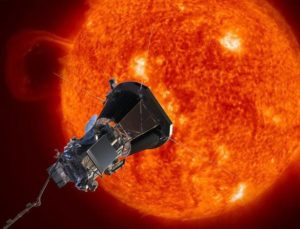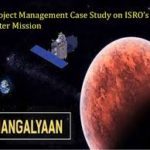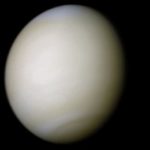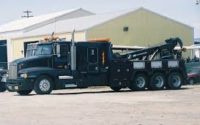Parker Solar Probe (PSP) Mission- First Mission To The Sun
Parker Solar Probe (PSP) is humanity’s first mission to the Sun. Parker Solar Probe is part of NASA’s Living With a Star program to explore aspects of the Sun-Earth system that directly affect life and society. The historic launch will transform our understanding of the Sun and solar system. PSP must travel through the fierce heat and radiation of the atmosphere of the Sun before reaching closer to the surface than any space craft before it.
Parker Solar Probe (PSP)- Details of launch
Launch of Parker Solar Probe will be from the Kennedy Space Center, Florida and is fixed between July 3 and August 19, 2018. The PSP will be launched on Delta IV-Heavy with Upper Stage. The average distance between the Earth and the Sun is 93 million miles. The space craft will reach as close as 3.8 million miles to the star. This position will be within the orbit of Mercury (42 million miles from the Sun) and more than seven times closer than any previous spacecraft. During seven flybys over nearly seven years, Parker Solar Probe will use gravity of Venus to reach its orbit closer to the sun.
The outermost part of the Sun is known as corona. PSP by employing a combination of appropriate (in situ) measurements and imaging will update our understanding and knowledge of the corona and the origin and evolution of the solar wind. These understanding will enable scientists to forecast changes in Earth's space environment that affect life.
Parker Solar Probe (PSP)- Protective measures for the spacecraft
At closest approach, Parker Solar Probe will have a speed of approximately 430,000 mph (700,000 kph), with the front of PSP's solar shield facing temperatures approaching 2,500 F (1,377 C). 4.5 inch (11.43 cm) carbon-composite shield will protect the spacecraft from this extremely high temperature. On the final three orbits, PSP will be within 3.8 million miles of the Sun’s surface. The present record holder, the Helios 2 spacecraft came within 27 million miles in 1976.
Parker Solar Probe (PSP)- Goals and objectives
PSP will carry out investigations in a region of severe heat and solar radiation. It will travel through the origin places of the highest energy solar particles observing solar wind speeding up from subsonic to supersonic.
The main goals of the PSP mission are to study the movement of energy and heat through the solar corona and understand the causes of the acceleration of the solar wind and solar energetic particles. Parker Solar Probe will be equipped with four instrument suites to study magnetic fields, plasma and energetic particles, and image the solar wind.
Parker Solar Probe (PSP) – Agencies behind
The Living With a Star flight program is managed by NASA’s Goddard Space Flight Center in Greenbelt, Maryland. The Johns Hopkins University Applied Physics Laboratory (APL) in Laurel, Maryland is responsible for designing, building and managing the mission for NASA. The spacecraft is named after solar astrophysicist Eugene Parker. This is the first time NASA is naming a spacecraft after living person.
Parker Solar Probe (PSP)- Expectations on the studies
By studying the Sun, scientists expect to learn more about stars throughout the universe. The knowledge about our only source of light and heat can be utilized to leverage the understanding of emergence of life on Earth. Disturbances in solar wind affects the magnetic field of Earth by pumping energy into radiation belts thereby leading to changes in near-Earth space known as space weather. This causes changes in the orbits of satellites and reduces their life span or interferes with onboard equipment. Better understanding of the Sun will enable scientists to tackle such situations too. Has sun got any magnetic field like the earth?









